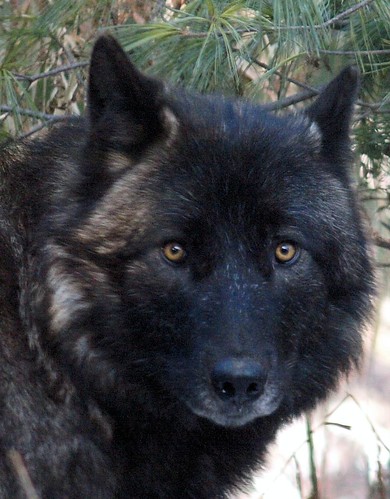FOR IMMEDIATE RELEASE
ADVISORY: Oregon Cattlemen’s Association Pushing Wolf-killing Legislation
Measure Would Declare “Emergency” Conditions due to 29 Wolves in Oregon, Fast-track Killing of “Journey’s” Pack
The Oregon Cattlemen's Association introduced legislation to make it easier to kill wolves including the Imnaha Pack shown here.
The new legislation is aimed at circumventing the Oregon Endangered Species Act and could open the floodgates for similar measures to eliminate safeguards for wildlife that is unpopular with livestock, logging, and development interests.
Compared to the 29 wolves now roaming Oregon, more than 1.3 million cattle exist in the state. In 2010, more than 55,000 cows were lost to causes from weather, disease and thieves. In the rare instances in which livestock are lost to wolves (fewer than 25 in 2011), ranchers are reimbursed at fair market value by Oregon taxpayers. Some have questioned whether the state’s compensation and killing programs provide a perverse incentive for anti-wolf livestock operators not to take effective measures to protect their livestock.
“The overwhelming majority of Oregonians are thrilled to have wolves back in the state and don’t want to see the pack that produced Journey killed,” said Noah Greenwald, endangered species director at the Center for Biological Diversity. “The Oregon Cattlemen’s legislation is clearly out of step with public opinion and should be rejected.”
There are currently four packs of wolves in Oregon, their members amounting to just 29 wolves. Wolves are protected as an endangered species under the state’s Endangered Species Act. In 2005, the state adopted a wolf-management plan that allowed for wolves to be killed in response to livestock depredations, but only after nonlethal measures to solve problems with depredations had been employed.
In September 2011, the Oregon Department of Fish and Wildlife ordered the killing of the alpha male and a yearling from the pack. This order followed the killing of two wolves from the pack earlier in the year and would have left only the alpha female and a pup to survive the winter. In October, the groups challenged the kill order, resulting in the court issuing a stay on the killing, which remains in place and has spared the lives of the two wolves. The groups have repeatedly requested documents from the Department of Fish and Wildlife demonstrating that nonlethal measures sufficient to solve depredation problems had been employed, but to date have not received anything of substance.
“Under the wolf plan, shooting endangered wolves was supposed to be the last resort — not the first option,” said Steve Pedery, conservation director for Oregon Wild. “We worked hard to develop a wolf plan that balanced wildlife conservation with the legitimate interests of ranchers, but the Oregon Cattlemen’s Association and other anti-wildlife groups are refusing to honor their end of the bargain.”
The Oregon Cattlemen’s Association, which has opposed and sought to undermine the state’s compromise wolf management plan since its inception, intervened in the case and is defending the state’s ability to kill endangered wolves. The group is now pushing the legislature to intervene in the legal proceedings.
“This isn’t the first time the Oregon Cattlemen’s Association has tried to legislatively undermine wolf protections in Oregon,” said Josh Laughlin, campaign director with Cascadia Wildlands. “We hope the Oregon legislature will stand up for Oregon’s recovering native wildlife and oppose this extreme wolf-killing legislation.”
###
Click here to learn more about wolves & wolf recovery in Oregon
###
Click here to learn more about wolves & wolf recovery in Oregon
###
Also contact:
Noah Greenwald, Center for Biological Diversity 503.484.7495
Josh Laughlin, Cascadia Wildlands, 541.434.1463
Noah Greenwald, Center for Biological Diversity 503.484.7495
Josh Laughlin, Cascadia Wildlands, 541.434.1463
source












 John Stephenson, a biologist, measured the stride of the gray wolf known
as OR7 in Crater Lake National Forest, Ore., in December.
John Stephenson, a biologist, measured the stride of the gray wolf known
as OR7 in Crater Lake National Forest, Ore., in December.






